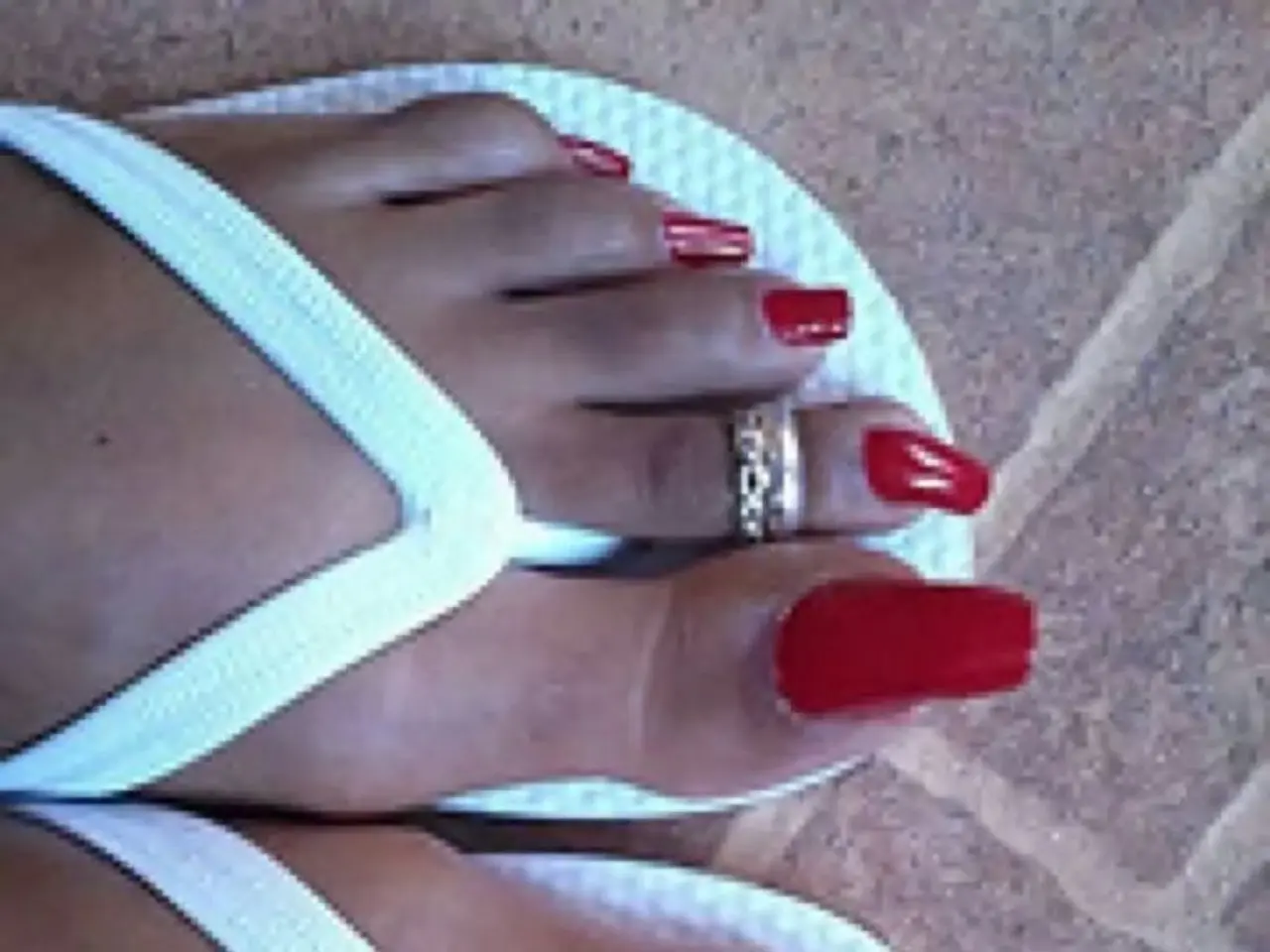Toe Walking Management through Orthotic Devices
In the world of paediatric healthcare, addressing idiopathic toe walking (ITW) is a common concern. This condition, characterised by a lack of heel contact with the ground during walking, is often observed in small children but should be addressed if it persists beyond the age of three.
Effective orthotic treatment for ITW primarily involves the use of leg braces, splints, and custom orthotics. These devices, designed to promote a heel-to-toe gait, offer support for proper foot positioning and stability. By encouraging the child to land on their heels first, they counteract the habitual toe walking pattern.
Orthotics are particularly useful when ITW is linked to foot structure or gait abnormalities. However, they are not a standalone solution. Combined with physical therapy, which includes gentle stretching exercises targeting tight calf muscles and foot muscles, these interventions help improve range of motion, muscle flexibility, and ultimately, retrain the gait pattern.
For more resistant cases, serial casting may be used to gradually stretch the Achilles tendon and calf muscles, enhancing dorsiflexion (lifting the foot upward). Following casting, continued use of orthotics and physical therapy can maintain the gains achieved.
Additional interventions, such as OnabotulinumtoxinA (Botox) injections into the calf muscles to reduce spasticity or muscle tightness, and surgical intervention (e.g., lengthening of muscles or tendons at the back of the lower leg) if conservative methods fail, may also be considered.
In summary, effective orthotic treatment for ITW integrates devices like braces, splints, or custom insoles with physical therapy to correct muscle tightness and improve gait. Serial casting and Botox may be incorporated for more resistant cases, with surgery as a last resort. This multidisciplinary approach addresses biomechanical, muscular, and neurological aspects for optimal functional outcomes.
Long-term follow-up is necessary for checking progress and adjusting orthotic medication based on the case. The magnitude of correction needed varies among individuals, requiring health professionals to prescribe interventions tailored to each patient's needs.
Orthotic devices are most effective when used in combination with other therapeutic interventions, such as physical therapy and stretching exercises. Studies show that AFO use can lead to children walking in the heel-down position, improving track width and incidence.
Supramalleolar Orthoses (SMOs) provide stability to the foot, allowing for some movement, and are best suited for children with minimal gait abnormalities. On the other hand, Ankle-Foot Orthoses (AFOs) offer ankle and foot support while limiting plantar flexion and promoting dorsiflexion. Dynamic Ankle-Foot Orthoses (DAFOs) allow for mobility and support for the foot while ensuring the natural movement of the muscles and joints of the foot and ankle.
Research in orthotic technology is ongoing, with the potential for newer, more effective solutions, adaptive gait correction, and mobility for the population. However, it's important to note that discomfort or restraint experienced by children can affect treatment compliance.
Timely intervention is crucial to prevent long-term functional damage and ensure normal motor development. If left untreated, toe walking can lead to skeletal complications such as shortening of the Achilles tendon, deficit in balance, and irregular gait patterns.
Orthotic intervention is particularly beneficial for children with ITW, improving gait patterns and minimizing the threat of musculoskeletal disorders. The efficacy of foot orthoses for managing toe walking depends on the severity and patient compliance.
In severe cases or when conservative treatments are ineffective, surgical interventions like Achilles tendon lengthening may be considered. However, it's essential to remember that toe walking may be a sign of difficulty in the neurological system, muscles, or an early idiopathic condition.
In conclusion, a personalized treatment plan and regular checking are crucial to ensure effectiveness and patient compliance. With the right approach, children with ITW can regain normal gait patterns and reduce the risk of long-term complications.
- Science and technology advancements continue to offer new ways to manage idiopathic toe walking (ITW), with research focusing on developing more effective orthotic solutions and adaptive gait correction.
- Mental health is just as crucial as physical health in addressing ITW, as persistent toe walking may be a sign of neurological issues or early idiopathic conditions that require immediate attention and careful monitoring.
- Combining orthotic medication, like braces, splints, or custom insoles, with health-and-wellness practices such as mental health therapy, gentle physical exercises, and lifestyle modifications can significantly improve outcomes for children with ITW.




